Apple's All-Star Lineup: New iMacs, Minis, MacBook And Magic Mouse
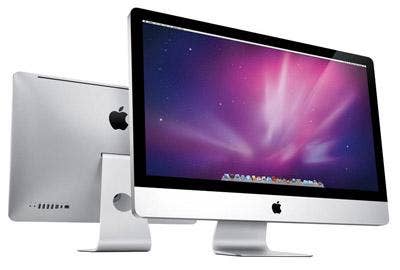
These are not your father's 15-inch displays. Apple's new iMac line consists of two, 21.5-inch and two, 27-inch displays. All four models feature edge-to-edge glass that covers pretty much the entire front of the enclosure. The models have LED-backlit displays with a 16:9 aspect ratio. The 21.5-inch iMac features 1920-by-1080 HD resolution. Apple said that its engineers could have simply stretched that resolution up and out for the 27-inch iMac, but instead, they took the display beyond HD with 2560-by-1440 resolution, which is 78 percent more pixels than the 21.5-inch iMac. All four models also use in-plane switching (IPS) technology for consistent color across an ultrawide 178-degree viewing angle.
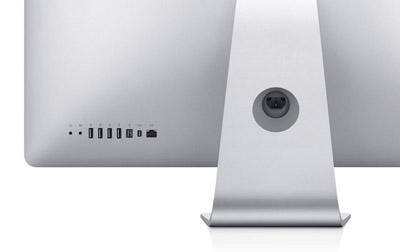
The DisplayPort on the iMacs lets users connect an external display, including the Apple LED Cinema Display, to an iMac. On the 27-inch iMac, the same port also provides input, which lets users connect any external source that has DisplayPort output, including a MacBook or MacBook Pro, and use an iMac as a display. The new iMacs have SD card slots built in. Users can import photos to iPhoto by inserting a camera memory card. Want more? There's also four USB 2.0 ports and a FireWire 800 port.
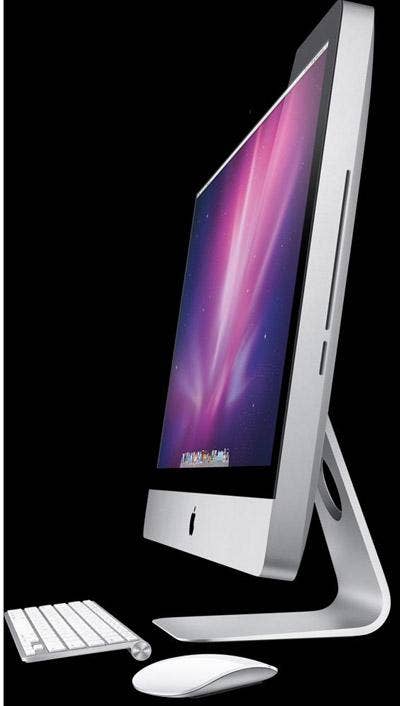
All four new iMacs feature a built-in iSight video camera with integrated stereo speakers and microphone, built-in AirPort Extreme 802.11n wireless networking and Bluetooth 2.1+EDR and wireless Apple Keyboard, in addition to the new multitouch Magic Mouse.
The new 21.5-inch iMac model has a 3.06-GHz Intel Core 2 Duo processor with 3 MB of shared L2 cache; 4-GB 1066-MHz DDR3 SDRAM expandable to 16 GB; Nvidia GeForce 9400M integrated graphics; 500-GB Serial ATA hard drive running at 7200 rpm; built-in AirPort Extreme 802.11n wireless networking and Bluetooth 2.1+EDR, among other features. It's now shipping at an MSRP of $1,199.
The other 21.5-inch iMac also features a 3.06-GHz Intel Core 2 Duo processor with 3 MB of shared L2 cache and 4 GB 1066-MHz DDR3 SDRAM expandable to 16 GB, and has ATI Radeon HD 4670 discrete graphics with 256-MB GDDR3 and 1 TB Serial ATA hard drive running at 7200 rpm. It is available for shipping, and goes for $1,499.
Save for its size, the 27-inch, 3.06-GHz iMac has the same specs as the model listed directly above and sells for $1,699.
The second 27-inch iMac again has the same specs, with one big difference: a 2.66-GHz Intel Core i5 quad-core processor with 8 MB shared L3 cache. It has a price tag of $1,999 and won't be available until November (as is also the case with a build-to-order option for a 2.8-GHz Intel Core i7 quad-core processor), but is available for pre-order.
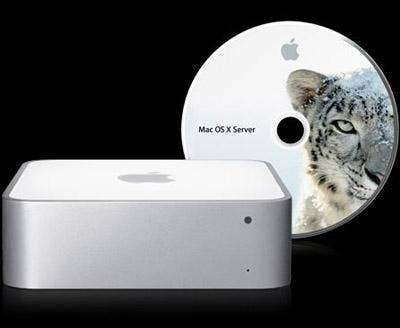
Apple has also revamped its Mac mini line, offering three upgraded models with 160-GB, 320-GB or an optional 500-GB hard drive.
The entry-level Mac mini is fairly inexpensive by Apple standards at $599, and has a 2.26-GHz Intel Core 2 Duo processor and 2 GB of DDR3, 1066-MHz of memory, a 160-GB hard drive, five USB 2.0 ports, FireWire 800, Nvidia GeForce 9400M integrated graphics and a SuperDrive. The $799 model features a 2.53-GHz Intel Core 2 Duo processor, 4 GB of memory and a larger 320-GB hard drive.
There's also a brand-new Mac mini with Snow Leopard Server preinstalled -- instead of a SuperDrive, there are two 500-GB hard drives for supersized storage. The Mac mini with Snow Leopard Server should appeal to small-business owners since they can add an unlimited number of Mac and PC users without per-user licensing fees. The model features a 2.53-GHz Intel Core 2 Duo processor, and is big on energy savings -- it uses less than 16 watts of power when idle, which is 4.5 times less than a similarly equipped tower server, according to Apple. This can be all yours for $999.
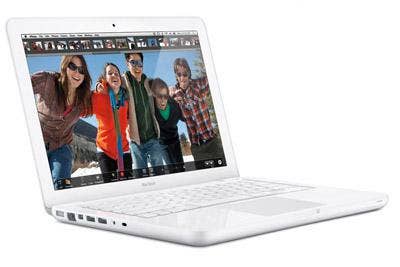
Just when you thought things couldn't get any better, Apple goes and releases a new MacBook. The 13.3-inch glossy wide-screen, LED-backlit display has a wide-screen resolution of 1280 by 800 pixels. Also new -- the entire multitouch trackpad acts as the button -- there is no separate button---and users can click anywhere on the touch-friendly glass surface. And since it's multitouch, users can use one or more fingers to scroll, pinch, swipe and rotate documents, images and applications.
All this and energy savings, too? It's true. Apple said that the built-in lithium-polymer battery offers the longest MacBook battery life ever -- up to 7 hours on a single charge, and can be recharged up to 1,000 times, which is good for about five years of typical usage.
MacBook comes standard with 2 GB of memory and a 2.26-GHz Intel Core 2 Duo processor. You'll also find a built-in iSight camera and mic with iChat software added. All this for only $999.

Here he comes to save the day, replacing Mighty Mouse without delay. Finally, after much rumor and innuendo, the brand-spanking-new Magic Mouse is here. The multitouch device lets users scroll in any direction with one finger, swipe through Web pages and photos with two fingers and click and double-click anywhere. Thanks to a chip inside, the Magic Mouse doesn't confuse a scroll with a swipe, and can also tell when users are just resting a hand on it. The little fellow supports momentum scrolling -- similar to iPhone and iPod touch -- where the scrolling speed is dictated by how fast or slowly gestures are performed. The Magic Mouse sells for $69.